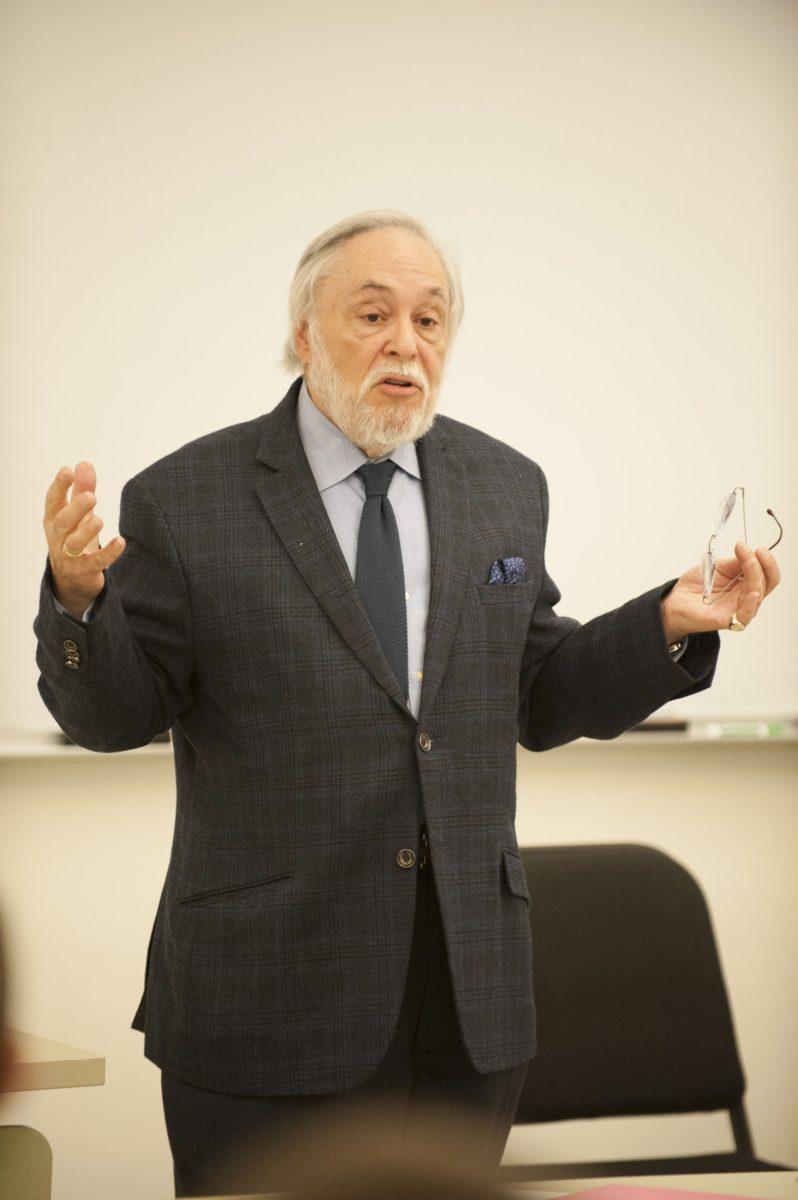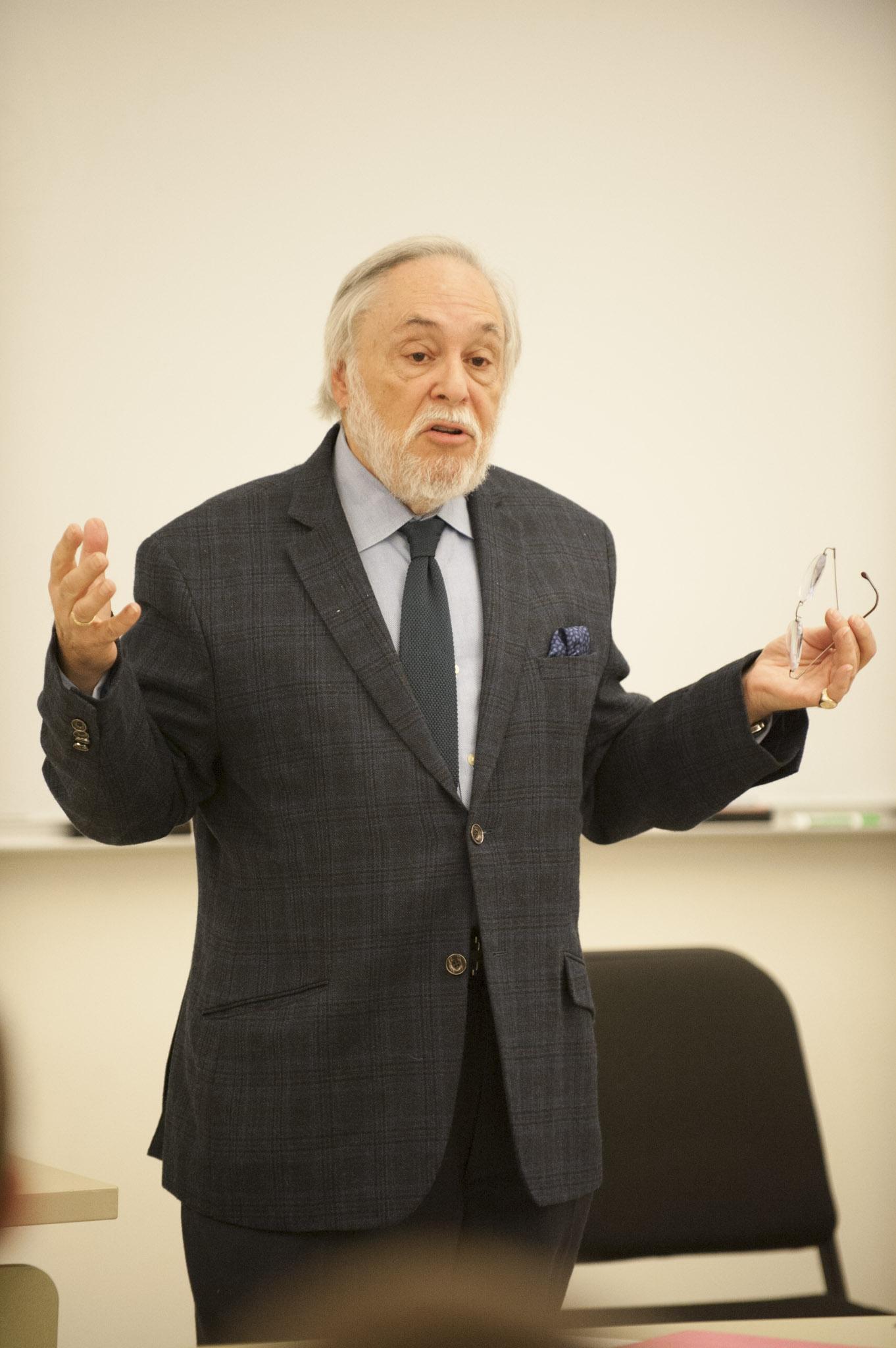Provost Andrew Rogerson and President Ruben Armiñana are heading ongoing university-wide discussions to explore the introduction of an Academic Success fee, which could be implemented as early as fall 2014.
The fee would be classified as a Category II, campus-based mandatory fee and would only be used for academic purposes such as increasing class availability, improving both academic and career advising, and introducing scholarship opportunities. Rogerson said class availability measures, such as hiring more faculty and opening more class sections for bottleneck courses, is his topmost priority.
Though both Rogerson and Armiñana insist the fee is not set in stone and is contingent on university discussions, both have used an estimate of $250 a semester – or $500 a year – as a placeholder. According to Rogerson, this would amount to $4.2 million extra a year to go toward academics.
“More students should graduate between four to five years,” said Rogerson, adding that the fee would guarantee a reduction of the time it takes to graduate. “Although $2,000 extra sounds like a lot for students, [they] are going to save money compared to the $18,000 [they] spend staying an extra year at Sonoma State.”
This potential fee increase comes off the heels of Governor Jerry Brown’s budget proposal for the 2014-15 fiscal year. His budget provides $2.47 billion for the California State University, a 6.3 percent increase from last year. It also promises no visible tuition increases. But it fell short of the $2.6 billion the CSU had requested in November.
“The CSU is unable, from a funding perspective, to provide enough classes for [students],” said Armiñana. “And I don’t see that changing in the next couple of years.”
Armiñana told the STAR he did not believe the fee would drive out cultural diversity, calling the theory “an empty argument” that “has never proven to be true.”
“If a small change [in tuition] gives you the number and type of classes needed to graduate in four years or so and saves you another semester or year, the savings to the student would be about $17,000 a year or more,” he said. “That would be an incentive for all the students, including those from diverse backgrounds, to attend SSU. We might even become more attractive to all students who want to move on with their careers.”
However, Susan Gutierrez, director of Financial Aid at Sonoma State, said the fee increase would not be covered by student loans alone.
“We don’t have other programs that would step in to cover that fee,” said Gutierrez. “Because the loans that are available to students in their own name only cover the cost of a CSU education ($5,472 for full-time undergraduates), the maximum amount a student could take for an academic year would not increase.”
She did say that parents with PLUS loans – loans meant to cover education expenses up to the cost of attendance minus all other financial assistance – would be eligible to take out more money, since mandatory campus-based fees are considered when Financial Aid sets a maximum loan amount for parents.
Rogerson acknowledged the lack of financial aid coverage for students unable to utilize parent PLUS loans as a disadvantage of the fee.
“This will be painful to some students,” he told the Associated Students Senate last Friday. “It will hurt some students more than others. But if they’re getting out with a faster degree, [one] could argue it offsets [that extra cost].”
Rogerson said he has had multiple discussions about the fee with students and faculty since November 2013. He hopes to host on-campus discussions, such as town hall meetings, to get as much student input as possible.
“Associated Students is thinking about how to engage students in this conversation,” said Director of Associated Students Erik Dickson. The Associated Students will devote time to discuss the subject at their next open meeting this Friday.
Under California State University Executive Order 1054, there are two ways in which Armiñana, with the help of the Campus Fee Advisory Committee, may implement this fee. The preferred method of CSU is by referendum via campus-wide vote, such as the vote to build the Student Center. The second method would be an alternative consultation, requiring Armiñana to seek a representative sample of students to make the decision.
Both Armiñana and Rogerson said each process would be transparent, inviting all students to provide feedback. They added, however, that referendums tend to have a low turnout of students, implying it was not the best option.
They also plan to release a “white sheet” to the public in the near future, which would document exactly where the proposed money would go. This would occur before the decision of whether or not to implement the fee would be reached.
Sonoma State would join six out of 23 California State University campuses that have already enacted a “student success” fee: San Bernadino, Los Angeles, San Luis Obispo, San Jose, Pomona and San Marcos. And just last week, the San Diego campus began having similar discussions, hoping to reach a decision in February.
While large-scale campus discussions have yet to occur, students catching wind of the fee are already contemplating whether or not it would be worth it.
“Although it wouldn’t affect me personally, [the student success fee] could benefit us in the long run by allowing more students to graduate in a timely manner and get more out of their education,” said junior Juliana Morcate, a philosophy major who plans to have completed her degree in three and a half years upon graduation. “I don’t think it would have much effect [on campus diversity].”
Junior Business student John Wilcox, who will not be graduating in four years, thinks otherwise.
“I would be against this fee because our tuition should already be going toward teachers and classes – we shouldn’t have to pay additional fees to get a standard education,” said Wilcox. “This fee will make it tougher for individuals with low income families to attend Sonoma State. Overall, I think it will negatively affect Sonoma’s diversity.”
Students and faculty interested in learning more about the fee are encouraged to contact the provost, keep on the lookout for discussion events and attend the Associated Students Senate meeting on Friday at 1 p.m. in the Bennett Valley conference room in the Student Center.





![[Both photos courtesy of sonoma.edu]
Ming-Ting Mike Lee stepped in as the new SSU president following Sakakis resignation in July 2022](https://sonomastatestar.com/wp-content/uploads/2024/04/CC4520AB-22A7-41B2-9F6F-2A2D5F76A28C-1200x1200.jpeg)



























